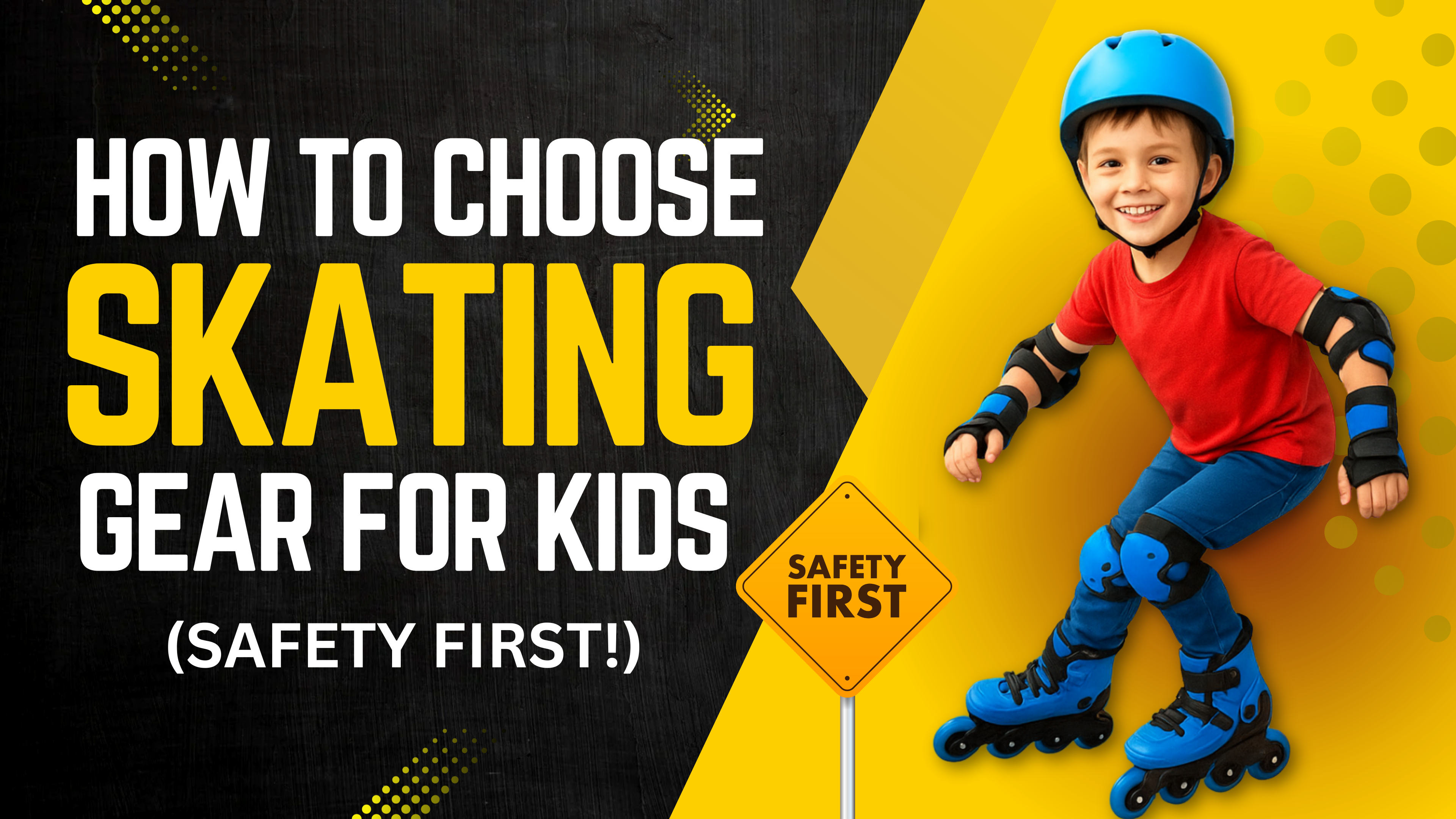Introduction
Skating is one of the most exciting and confidence-building activities for children. It improves balance, boosts fitness, and teaches discipline—all while being fun. But as with any sport that involves speed and movement, safety is key. The right kids skating gear protects children from injuries and helps them enjoy learning without fear.
In this guide, we’ll explain exactly what skating gear your child needs, how to choose the best equipment, and why investing in quality gear ensures long-term skating safety for children.
Why Safety Gear is Essential
Every parent has seen their child fall while learning to cycle, skate, or even run. Falling is part of the process—but injuries don’t have to be.
-
Reduces risks: Proper gear prevents serious injuries like fractures, concussions, and cuts.
-
Boosts confidence: Kids feel more secure and willing to try new moves when protected.
-
Supports learning: With fewer worries about falling, children learn faster.
👉 Simply put: skating without gear is like driving without a seatbelt—it’s a risk not worth taking.
Essential Skating Gear for Kids
Here’s a detailed breakdown of the must-have gear to ensure your child stays safe while enjoying skating.
1. Helmet – The Top Priority
A helmet is non-negotiable. Head injuries can be dangerous, and a high-quality helmet is the most important piece of gear.
What to look for:
-
Certified helmets (CPSC, ASTM, or ISI-approved).
-
Snug but comfortable fit.
-
Adjustable chin straps.
-
Lightweight with ventilation holes.
Tip: Replace the helmet immediately if it cracks after a fall.
2. Knee Pads – Everyday Protection
Children almost always land on their knees when they fall. Knee pads prevent bruises and serious injuries.
What to look for:
-
Thick foam padding.
-
Hard plastic outer shell.
-
Breathable, lightweight straps.
3. Elbow Pads – Guarding the Upper Limbs
Falling forward often puts elbows at risk. Elbow pads absorb impact and prevent scratches.
What to look for:
-
Strong caps for shock absorption.
-
Soft cushioning inside.
-
Adjustable, anti-slip straps.
4. Wrist Guards – The Most Overlooked Gear
Kids instinctively use their hands to break falls. This makes the wrist the most commonly injured body part. Wrist guards prevent sprains and fractures.
What to look for:
-
Splint-style guards for firm wrist support.
-
Comfortable padding.
-
Durable but flexible material.
5. Skates – The Core Equipment
The right pair of skates ensures not only performance but also safety.
Types of skates:
-
Quad skates (2+2 wheels): Best for beginners due to stability.
-
Inline skates (single row): Great for speed and balance once skills improve.
What to look for:
-
Adjustable sizes to last longer.
-
Strong ankle support.
-
Built-in brakes for beginners.
-
Lightweight design.
6. Clothing & Footwear
Comfortable clothing and proper socks prevent blisters and allow free movement.
-
Choose padded sports socks that wick away sweat.
-
Opt for track pants or leggings instead of shorts.
-
Breathable, full-sleeve T-shirts protect against scrapes.
Tips for Parents on Skating Safety
-
Always check gear fit before every practice.
-
Teach your child how to fall safely—bend knees, avoid stiff falls.
-
Choose smooth skating surfaces (avoid gravel or busy streets).
-
Supervise practice sessions, especially for beginners.
-
Make it a rule: No gear = No skating.
Common Mistakes to Avoid
-
Buying oversized gear thinking “kids will grow into it.”
-
Skipping wrist guards (though they protect one of the most injury-prone areas).
-
Going for cheap, uncertified helmets.
-
Ignoring regular maintenance—worn-out straps or broken gear are unsafe.
FAQs
Q1. At what age should kids start wearing full skating gear?
From the very first lesson—no matter how young (3–4 years).
Q2. Can siblings share gear?
Helmets and skates should not be shared. Pads can be shared if sizes match.
Q3. How often should gear be replaced?
Helmets: after a fall or every 2–3 years. Pads: when straps wear out. Skates: when outgrown.
Q4. Which is better for kids—quad skates or inline skates?
Quad skates for beginners; inline skates for advanced learners.
Q5. Is gear necessary indoors?
Yes—injuries can happen indoors too.
Conclusion
Skating is a fun, rewarding activity that teaches kids balance, confidence, and discipline. But the right kids skating gear is what makes the journey safe and enjoyable. A helmet, pads, wrist guards, and supportive skates should never be optional.
By prioritizing skating safety for children, you’re not just preventing injuries—you’re giving your child the confidence to skate fearlessly, learn faster, and maybe even dream of a professional sports future.
Safety first, fun always—that’s the golden rule of skating.

